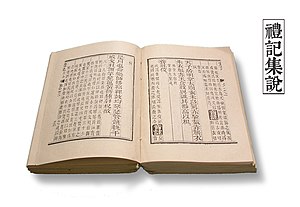Catchword

A catchword is a word placed at the foot of a handwritten or printed page that is meant to be bound along with other pages in a book. The word anticipates the first word of the following page. It was meant to help the bookbinder or printer make sure that the leaves were bound in the right order or that the pages were set up in the press in the right order. Catchwords appear in some medieval manuscripts, and appear again in printed books late in the fifteenth century. The practice became widespread in the mid sixteenth century, and prevailed until the arrival of industrial printing techniques late in the eighteenth century.
Theodore Low Devinne's 1901 guide on Correct Composition had this to say:
For more than three centuries printers of books appended at the foot of every page the first word or syllable of the next page. This catchword was supposed to be needed by the reader to make clear the connection between the two pages ; but the catchword is now out of use, and it is not missed.[1]
See also
Notes
- ^ De Vinne, Theodore Low (1901). The Practice of Typography: Correct Composition: A Treatise on Spelling Abbreviations, the Compounding and Division of Words, the Proper Use of Figures and Numerals, Italic and Capital Letters, Notes, Etc., With Observations on Punctuation and Proof-Reading (Second ed.). New York: The Century Company. pp. 142–143.
References
- De Hamel, Christopher. Scribes and Illuminators. Toronto: University of Toronto Press, 1992. 41.
- De Vinne, Theodore Low (1901). The Practice of Typography: Correct Composition: A Treatise on Spelling Abbreviations, the Compounding and Division of Words, the Proper Use of Figures and Numerals, Italic and Capital Letters, Notes, Etc., With Observations on Punctuation and Proof-Reading (Second ed.). New York: The Century Company.
- Gaskell, Gaskell. A New Introduction to Bibliography. Oxford: Clarendon Press, 1972. 52–53.
- McKerrow, Ronald B. An Introduction to Bibliography for Literary Students. Oxford: Clarendon Press, 1964. 82.
- Roberts, Matt T., and Don Etherington, Bookbinding and the Conservation of books: A Dictionary of Descriptive Terminology

